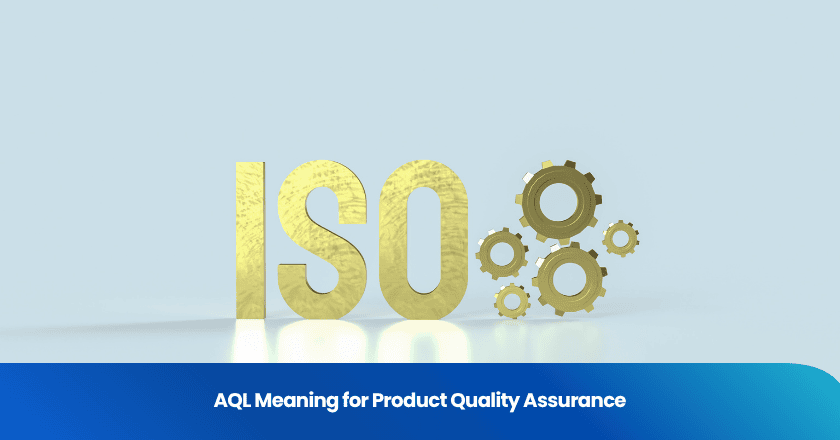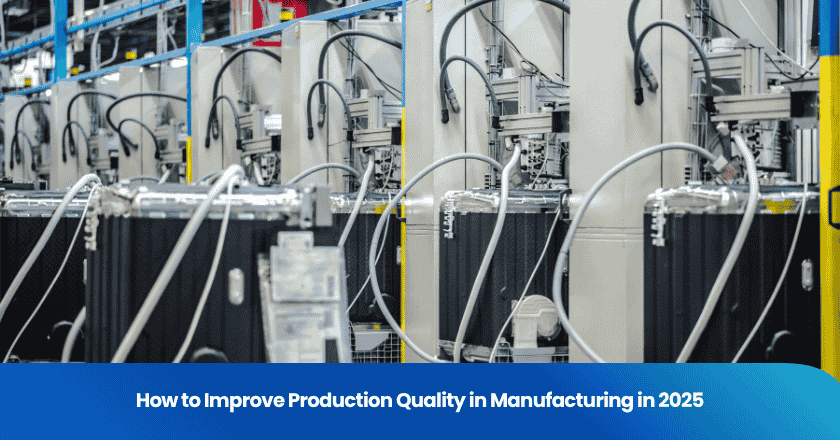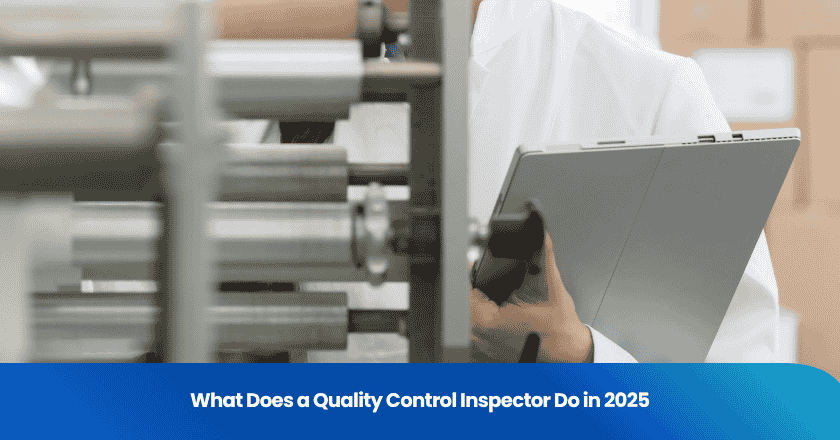
You encounter the term aql meaning in quality when you need to set clear standards for product inspections. The acceptable quality level defines the maximum percentage of defects you can allow in a batch, while the acceptable quality limit marks the worst tolerable quality level during random sampling. When you use an aql-based approach, you rely on aql inspection, aql sampling, and aql charts to ensure strict quality control. This process helps you minimize defects, reduce complaints, and maintain accountability across industries like consumer goods, electronics, and healthcare.
AQL Meaning in Quality
What Is AQL?
You encounter the term aql meaning in quality when you need to set clear standards for product inspections. AQL stands for Acceptable Quality Limit, an internationally recognized quality control standard. You use AQL to determine the maximum number of defects allowed in a batch before you must reject it. This system relies on sampling inspection, which means you do not need to check every item in a shipment. Instead, you select a sample and evaluate it against predefined limits.
The roots of AQL trace back to World War II. Statisticians like Harold F. Dodge developed these standards to ensure the reliability of military equipment. Their work laid the foundation for modern quality control practices, making AQL a cornerstone in industries worldwide.
When you apply aql meaning in quality, you follow guidelines based on ISO 2859-1. This approach helps you balance inspection costs and risks, ensuring that your products meet customer expectations without unnecessary expense. You rely on AQL to make objective decisions about accepting or rejecting batches, which streamlines your quality assurance process.
- AQL meaning in quality is recognized in international trade regulations.
- You use AQL to assess product quality through sampling inspection.
- The system sets a maximum number of acceptable defects.
- AQL helps you decide whether to accept or reject a batch.
- You benefit from a balance between inspection costs and quality risks.
Why AQL Matters
You need to understand why aql meaning in quality plays a vital role in your business. AQL provides measurable benefits that impact your bottom line and reputation. When you implement AQL, you ensure consistent product quality, reduce defects, and save costs by catching issues before products reach customers.
| Benefit | Description |
|---|---|
| Quality Assurance | Ensures consistent product quality throughout production processes by adhering to quality standards. |
| Reduced Defects | Identifies potential issues early on, preventing defective products from reaching customers. |
| Cost Savings | Reduces costs associated with returns, refunds, or customer complaints by addressing quality issues before products leave manufacturing. |
You also use aql meaning in quality to manage supplier relationships. AQL sets clear expectations for suppliers, guiding your selection and ongoing management. You reference AQL during inspections to determine if shipments meet your standards. If a batch exceeds the acceptable defect limit, you can reject it and require corrective actions.
| Aspect | Explanation |
|---|---|
| Quality Standards | AQL establishes quality standards that suppliers must meet, influencing supplier selection. |
| Decision-Making Process | The ability of suppliers to meet AQL affects ongoing management and relationships with them. |
| Inspection Reference | AQL serves as a reference during inspections to determine acceptable defect levels. |
| Risk Management | AQL helps manage quality control and reduce the risk of unacceptable shipments. |
| Corrective Actions | Exceeding AQL limits may lead to batch rejection and necessitate corrective actions. |
You rely on aql meaning in quality to protect your brand reputation and maintain customer trust. By setting clear quality limits, you demonstrate your commitment to delivering reliable products. You also minimize the risk of costly recalls and dissatisfied customers. When you use AQL, you create a systematic approach to quality assurance that benefits your entire supply chain.
Acceptable Quality Level vs. Acceptable Quality Limit
Key Differences
You often see the terms "acceptable quality level" and "acceptable quality limit" used in quality control, but they serve distinct purposes. The acceptable quality level refers to the maximum number of defective units you can allow in a sample before you reject a batch. The acceptable quality limit sets the threshold for batch rejection, acting as the final boundary for quality acceptance.
You use these concepts to set clear benchmarks for inspections, making your decision process more objective and consistent.
Here is a table that highlights the technical differences:
| Key Factor | Acceptable Quality Level (AQL) | Acceptable Quality Limit (AQL) |
|---|---|---|
| Definition | Maximum number of defective units allowed in a sample | The threshold beyond which a batch is rejected |
| Application | Used to determine sample size and acceptable defect rates | Used to set limits for batch acceptance in quality control |
| Impact on Customer Satisfaction | Reflects the quality level customers are willing to accept | Directly influences the decision to accept or reject a batch |
You rely on aql to define the maximum percentage of defective items acceptable during inspection. For example, an aql of 2.5% allows up to five defects in a sample of 200 units. The acceptable quality limit, on the other hand, marks the worst tolerable quality level during random sampling. This distinction helps you set precise standards for your inspection process.
Role in Quality Control
You play a critical role in quality control by applying both acceptable quality level and acceptable quality limit. These benchmarks guide your inspection process and help you make informed decisions about product acceptance. When you use aql charts and sampling plans, you quickly assess whether a sample meets your standards. This system improves inspection efficiency and ensures consistent outcomes.
Acceptance sampling involves using charts that define code letters for lot sizes and inspection levels. You reference an aql chart to determine defect thresholds, which directly influence inspection results. If the number of defects in your sample exceeds the acceptable quality limit, you reject the batch. This process helps you avoid quality issues and supply chain disruptions.
- Product inspection helps you resolve problems during production.
- Analytics from inspections highlight commonly failed items, supporting improvements in your production process.
- Communication tools ensure all stakeholders stay informed about inspection updates.
You use these concepts to set quality benchmarks, monitor supplier performance, and implement corrective actions when necessary. By understanding the differences and roles of acceptable quality level and acceptable quality limit, you strengthen your quality assurance strategy and deliver products that meet customer expectations.
AQL Calculation
Determining Sample Size
You need to determine the right sample size before you start any aql calculation. The sample size directly affects the reliability of your inspection results. If you choose a larger sample, you increase the accuracy of your assessment and reduce the risk of errors. The sample size must be proportional to the total lot size to ensure that your inspection reflects the actual quality of the batch.
You use standard tables, such as ISO 2859-1 and ANSI/ASQ Z1.4-2003, to guide your selection. These tables help you categorize defects and set limits based on sample size. You also rely on tools like the Attribute Sampling Calculator, which uses statistical formulas to calculate the sample size and acceptance criteria. This calculator references standards like MIL-STD-105E and ISO 2859, focusing on the presence or absence of defects.
Tip: Always match your sample size to your batch size and acceptable quality limit. This approach ensures that your inspection results are statistically significant.
Here is a table summarizing the standard methods for aql calculation in manufacturing:
| Standard | Description |
|---|---|
| ISO 2859-1 | A widely trusted standard for consistent quality in aql calculations. |
| ANSI/ASQ Z1.4-2003 | Provides sampling procedures for inspection by attributes, including how to determine sample sizes and defect limits. |
| AQL Tables | Used to categorize defects into critical, major, and minor, and to determine acceptable defect limits based on sample size. |
Different industries adapt aql calculation methods to their specific needs. For example:
- In pharmaceuticals, 38% of manufacturers classify all visible particles as critical defects.
- Another 38% treat them as major defects.
- 23% split classifications between critical and major defects based on particle type.
When you select your sample size, you consider the batch size and the acceptable quality limit. You must ensure that your sample is large enough to provide a reliable assessment. In AQL C=0 sampling plans, a sufficiently large sample is necessary to maintain accuracy.
Acceptance Number
Once you determine your sample size, you need to set the acceptance number for your aql calculation. The acceptance number is the maximum number of defects allowed for a batch to pass inspection. You follow a step-by-step process to establish this number:
1. Identify your lot size, inspection level, and aql value.
2. Use the lot size and inspection level to find the sample size code letter in Table 1.
3. Confirm the sample size corresponding to the code letter in Table 2.
4. Combine the sample size with the aql value to determine the acceptance number (Ac) and rejection number (Re).
You use the acceptance number to decide if a batch meets your acceptable quality limit. If the number of defects in your sample is less than or equal to the acceptance number, you accept the batch. If it exceeds the rejection number, you reject the batch.
- Acceptance Number (Ac): The maximum number of defects allowed for acceptance.
- Rejection Number (Re): The minimum number of defects that result in rejection.
- AQL Value: A series of numbers indicating quality requirements. Lower values mean higher quality.
Note: The aql calculation process ensures that your inspection decisions are objective and consistent. You protect your business by setting clear thresholds for product quality.
You must always align your acceptance number with your acceptable quality limit. This alignment guarantees that your inspection process remains fair and reliable. By following these steps, you create a robust quality control system that supports your business goals.
AQL Sampling Example
Using AQL Tables
You can use aql tables to guide your inspection process and make objective decisions about product quality. Imagine you have a batch of 13,000 units. You select Inspection Level II, which leads you to a sample size code letter "M" in the aql tables. When you look up this code letter, you find that you need to inspect 315 units from your batch.
Next, you set your acceptance and rejection criteria using the aql tables. For critical defects, you set the aql values at 0.0%. This means that if you find even one critical defect, you must reject the batch. For major defects, you set the limit at 2.5%. The aql tables show that you can accept the batch if you find 14 or fewer major defects, but you must reject it if you find 15 or more. For minor defects, you use an aql of 4.0%. The tables indicate you can accept up to 21 minor defects, but 22 or more means rejection.
You can use an aql sampling simulator to practice this process. The simulator helps you visualize how different aql tables and sample sizes affect your inspection results. By running several scenarios, you gain confidence in applying aql sampling simulator tools to real-world inspections.
Interpreting Results
After you complete your inspection, you need to interpret the results using the aql tables. Follow these steps to make your decision:
1. Define your acceptance criteria based on the aql tables and your product requirements.
2. Calculate the maximum number of defects allowed for each defect type using the aql sampling simulator.
3. Inspect the sample and record the number of critical, major, and minor defects.
4. Compare your findings to the limits set in the aql tables.
5. Accept the batch if the number of defects is within the allowed range. Reject the batch if any defect type exceeds the limit.
For example, if you find no critical defects, 12 major defects, and 18 minor defects in your sample of 315 units, you accept the batch. If you find 16 major defects, you must reject it. The aql sampling simulator can help you test different scenarios and understand how changes in aql tables or sample sizes impact your decisions.
By following these steps, you ensure that your inspection process remains consistent and reliable. You use aql, aql tables, and aql sampling simulator tools to maintain high product quality and meet customer expectations.
You strengthen quality management when you understand and apply AQL implementation in your inspections. AQL implementation defines clear limits for product quality, helping you optimize quality management and reduce waste. By following best practices—such as reviewing documentation, communicating with factories, and using third-party inspections—you ensure consistent product quality.
- AQL implementation sets standards that improve product quality and streamline quality management.
- You protect your reputation and boost product quality by making AQL implementation a core part of your process.
Consistent AQL implementation supports reliable product quality and drives effective quality management across your operations.
FAQ
What is the acceptable quality level in quality control?
You use the acceptable quality level to set the maximum number of defects allowed during inspection. This benchmark helps you decide if a batch passes or fails. You rely on sampling to check products and maintain consistent control over your production process.
How do you select the right sampling plan for inspection?
You choose a sampling plan based on your lot size and acceptable quality level. Standard tables guide you in selecting sample sizes and acceptance numbers. This process ensures your inspection remains objective and supports effective quality control.
Why do you need different AQL levels for inspection?
You set different aql levels to address various defect types. Critical, major, and minor defects require separate limits. By using multiple levels, you improve control and tailor your inspection to meet specific quality control needs.
How does sampling improve quality control?
You use sampling to inspect a portion of your batch instead of every unit. This method saves time and resources while maintaining strict control. Sampling helps you identify issues early and supports continuous improvement in your quality control system.
What role does inspection play in quality control?
You rely on inspection to verify product quality before shipment. Inspection ensures products meet your acceptable quality level and aql levels. This step strengthens your control process and protects your reputation by preventing defective items from reaching customers.
Grow your business with TradeAider Service
Click the button below to directly enter the TradeAider Service System. The simple steps from booking and payment to receiving reports are easy to operate.


